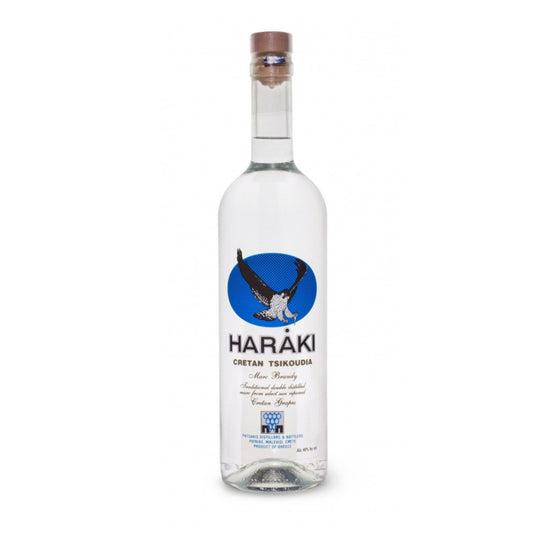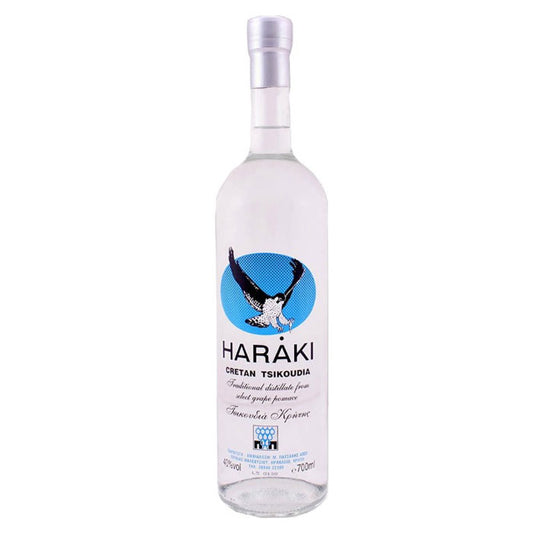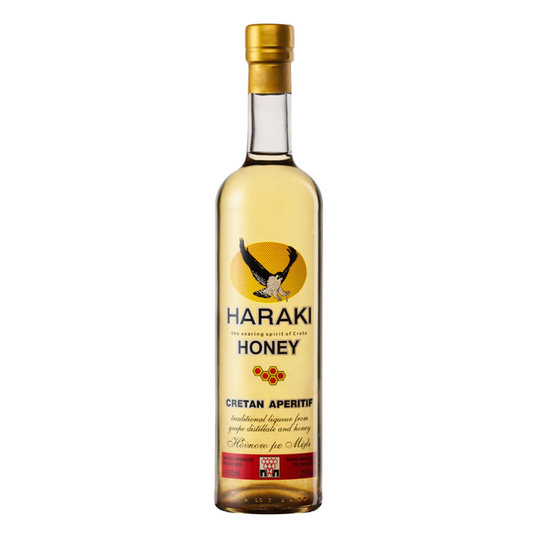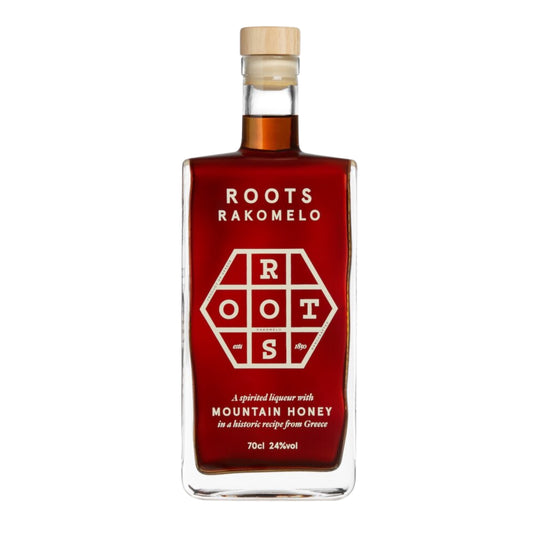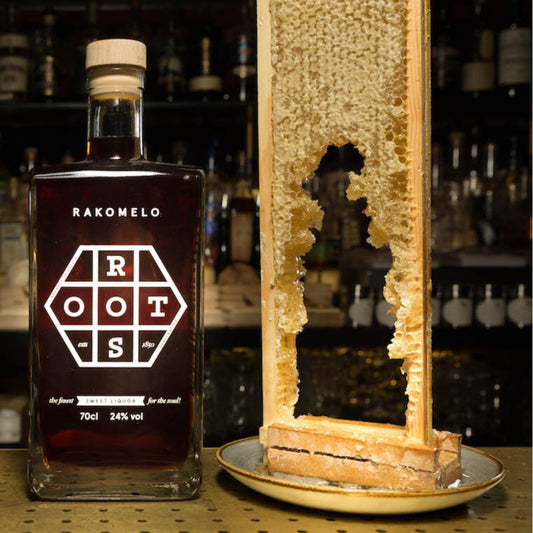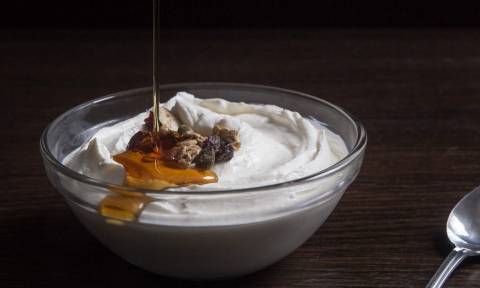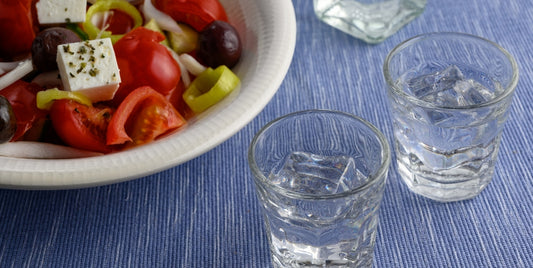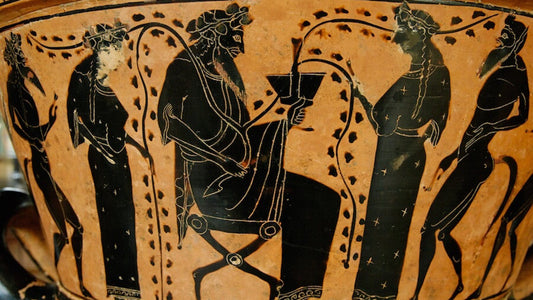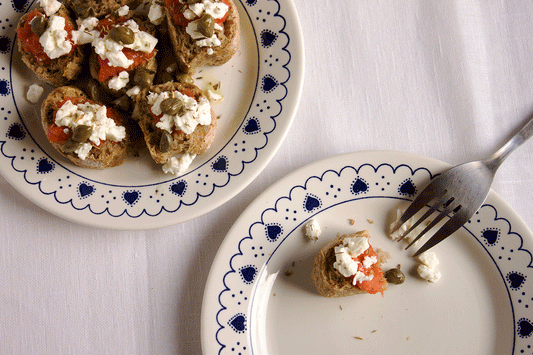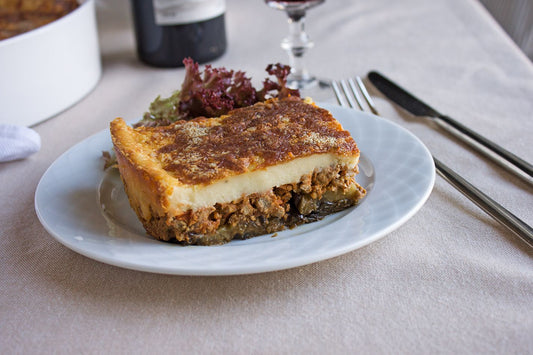
Tsipouro is a real Greek product closely related to the Greek lifestyle, hospitality and entertainment of the Greeks.
The Cretan raki, originally called tsikoudia in Crete, is the same in production and taste as tsipouro, the pomace brandy known in Greece. Raki is the drink served on Crete on almost every occasion. This Cretan drink is as a symbol of friendship and nobility and a sign of social communication. To put it simply, it's the national drink of the Cretans. It is served almost naturally after every meal and there is often the opportunity to drink raki.
There is always a glass of raki when the Cretans greet their guests, wish each other, gather in the traditional cafes, overcome their worries and resolve their struggles. The purpose is not to be drunk or overwhelmed with food, but to simply create a pleasant social interaction.
The raki is made in the autumn after the grape harvest, when the vines have been pruned. Raki is obtained from the press residue of the fresh grapes during winemaking, the pomace, by distillation. The raki is clear and contains on average between 30 and 40 percent alcohol by volume.
Where does Raki come from?

This alcoholic drink is typical of countries in the Mediterranean region. It appears on many Greek islands and mainland Greece. Depending on the region and production method, it can appear under the following names: Tsipouro, Suma (Rhodes, Chios), Tsikoudia (Crete), Zivania (Cyprus).
Raki is widespread in Crete and you can easily find this alcohol on the shelves of even the smallest supermarket. Usually these are local "brands" that have been distilled on site. Cretans are happy to offer this drink to tourists and guests.
The original name comes from the Turkish and the raki produced in Turkey is anise flavoured in contrast to the Cretan one. Yeni rakı is a famous brand of raki in Turkey. In contrast to the Turkish rakı or the Greek ouzo, raki from Crete does not contain anise. In terms of taste, raki is comparable to Italian grappa. Just like grappa, it is not diluted with water.
Countries in the Middle East call raki with various names such as Araka, Araki, Ariki. When raki is diluted with water has milky white color that's why it has the nickname Lion milk. Some claim that it is called Iraqi (from Iraq) because it was first made in this country and distributed in other regions. Others say it got its name from the razaki grapes used in its manufacture.
Both theories are acceptable. It may surprise some that its most common name is derived from the Arabic word عرق [ʕaraq], which means distilled. The theory is that Arak means "sweat" in Arabic and Araki means "that which makes you sweat". Sometimes when you drink too much raki you sweat and when raki is distilled it falls like drop by drop so the name may come from Arabic
Distillation : How to make Raki

Distillation follows an ancient method that has been used for centuries and is now part of the Cretan tradition. The marc, which has been fermented in barrels for more than a month, boils in a special kettle, the Kazani.
The kettle or kazani consists of 4 parts:
- the pot with the marc
- the lid is big enough to seal as much steam as possible
- the pipe is long enough to leave space between the fire that heats the pomace and the cold water (see next step). The pipe (Loulas in Greek) directs the steam to the barrel
- the barrel (or rouba) with cold water inside so that the steam flowing through the tube becomes raki drops
Raki : The process of distillation
The distillation of the marc for the production of Tsipouro / Raki is a complex process that requires specific knowledge and know-how, experience and modern technical equipment in order to achieve optimal results. Winemaking residues are used to make raki.
The process for making Cretan raki is the same as it was centuries ago. They keep the same method that is part of the culture and history of Crete. After the grapes are pressed (usually classified as part of tradition), the skins and seeds are initially stored in barrels for about 40 days, where fermentation takes place.
The Raki kettle consists of three basic parts. There is the pot, the lid and a pipe that the steam is used to transfer. When it is time for production, the producer puts the marc and water in the kettle. The fire is lit under the kettle and the pomace begins to simmer. The fire cannot be that strong or too low. The intensity of the fire is important so that the pomace is not burned.
When the heated mixture reaches boiling point, the final distillation process begins. After about an hour at the end of the vaporizer, the first drops appear, which are almost pure alcohol. The distillation fractions are divided into the "head", the "heart" and the "tail". The "head" is characterized by a high alcohol content, while the "tail" has higher alcohols with a heavy aroma and taste. "Head" and "tail" are then removed and collected again in the still for the next distillation. The heart is thinned, matured and then filtered to be bottled. Only the middle part of the distillate, called "heart", is intended for consumption.
The alcohol from the pomace evaporates during cooking. The steam circulates in the pipe of the boiler. There is chilled water on the outside of the pipe so that the steam condenses drop by drop into a vessel. These are the first drops of Cretan Raki, called "Protoraki".
The quality is measured in degrees Celsius. A good quality raki is usually at 20 degrees. The distillation process is finished as soon as all the grapes have reached the desired level in the kettle.
The final amount of distilled liquid contains the least amount of alcohol, while the actual raki is made in the middle of the whole process. This takes about three hours. During this time, the kettle owners must taste the alcohol content, turn the heat up or down, and finally stop the distillation when the raki has achieved the desired taste.
In Crete, the alcohol content is determined with a Baumé hydrometer. It is a calibrated glass tube that floats in the liquid. The alcohol content can be determined using a scale. Raki is good at 17 degrees Baumé (40% alc.) Or sometimes at 18 degrees Baumé (43% alc.).
Some distillates can be selected and aged in oak barrels for several years to give them the properties of spices, dried fruits, vanilla, chocolate, smoke aromas, leather notes, barrel wood aromas, etc., depending on the type of raki and the aging conditions.
Raki : License restrictions for distilling
The first Greek Prime Minister, the Cretan Eleftherios Venizelos, first introduced the custom of distilleries in the 1920s.
Back then, farmers were given special permits or licenses to make raki at home and earn extra income. To date, there is at least one resident in every village with a license to produce the drink.
There are drastic licensing restrictions that the state imposes on raki distillation. Therefore there are only a few family businesses left in Crete that are legally allowed to distil raki. Kasani owners are allowed to burn raki for their own use for 48 hours, with a legal limit of 400 liters. However, fees must also be paid for this personal use. This regime results in widespread illegal distillery with very severe penalties and the closure and confiscation of the kasani.
Facts about Raki
Raki is a protected product (registered trademark). The European Union protects Crete's raki (tsikoudia) and only considers them original if they were made in their original location, in our case on Crete which spirits monopoly.
The other protected spirits on the list are brandy (from Jerez), grappa (from Barolo), Berliner Kümmel, GenièvreFlandres Artois, Scotch whiskey, Irish whiskey and cognac.
Yamas (Greek)

Any time you find yourself toasting during a drinking fest you say yamas which is the equivalent of ‘cheers’, you’ll find it difficult to say without a smile on your face.
Rakokazana, a big festival in Crete
However, distillation is more than a process. It is part of a local rite that is deeply rooted in the island's traditions. The festival of raki distillation is known as rakokazana or kazenamata.
During rakokazana, the locals distill and taste the very first raki of the season and the people eat, dance, sing and drink ... tons of raki! At this time you will hear the word yamas a lot. It is a very famous word and the Greeks use it in many cases / celebrations - as rakokazana - to express their enthusiasm.
It's a moment of joy and celebration, especially in several villages. A long awaited moment after the hard work gathering grapes and making wine.
If you visit Crete in late October or November, be sure to visit a rakokazana to experience the magical moment when the pure Cretan spirit drips out of the pipe. You will likely try amazing Cretan food, drink lots of raki, dance, sing and take a bottle home with you!
How to combine Raki

Tsipouro / raki, is the drink that relaxes us at all times, that urges us to join in and stay in close contact with our friends, gather around a table and enjoy a wide range of traditional savory mezedes.
Raki goes well with delicious meat dishes and seafood, which are prepared in different ways, with matured cheese and sausages, as well as with other earthy dishes such as pickled vegetables, grilled wild mushrooms, tomatoes in sea salt, olives on homemade rusks and the oven. baked potatoes.
Thanks to its intense taste and digestive properties, raki can also add the finishing touch to a rich meal.
Raki is enjoyed completely chilled to 10 ° C - definitely in good company - or with a small amount of ice.
Rakomelo (Raki & honey)
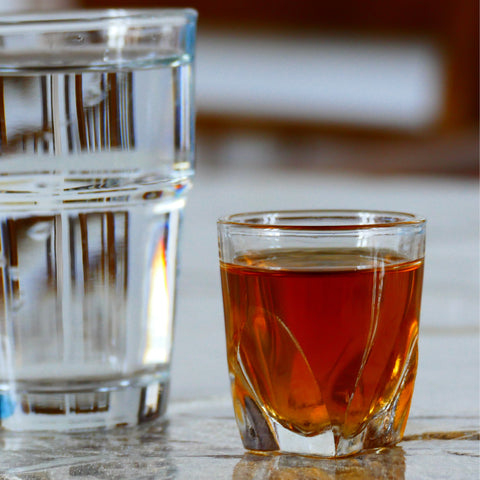
If you don't like the taste of pure raki, you can always drink rakomelo that has been mixed with honey. Although distilleries often mix the honey before pouring it into the raki, you can also make it yourself using simple raki. All you need is raki and four tablespoons of honey. You should mix two cups of raki with four tablespoons of honey in a saucepan and gently heat until the honey has melted. You can either serve it hot or refrigerate it in the refrigerator before serving.
Tip: Add two cinnamon sticks for an even tastier result.
Raki : Benefits of drinking
Raki / Tsipouro is a strong alcoholic drink and should therefore be consumed moderately. Cretan raki is certainly an element that enhances "social communication" but also appears to have benefits on the health of most people when consumed with caution , 1 to 2 glasses a day.
Due to the presence of alcohol, it causes vasodilation and lowers blood pressure. It has antimicrobial properties, which is why it is used in many local remedies for colds, fevers, and headaches. It has been linked to a reduction in cardiovascular and non-fatal myocardial infarction deaths.
Of course, the beneficial properties of raki are achieved once one has adopted a generally healthy lifestyle, including a balanced Mediterranean diet, daily exercise, and as much self-restraint from smoking as possible. Indeed, the people of Crete believe that "any disease that cannot be treated with raki is serious".
Decalogue of Raki

- The first glass brings your good appetite
- The second health
- The third glass brings joy
- The fourth glass brings luck
- The fifth glass causes excitement
- The sixth glass brings chatter
- The seventh glass brings struggle
- The police bring the eighth glass
- The ninth glass brings the judge
- And the tenth the funeral!


